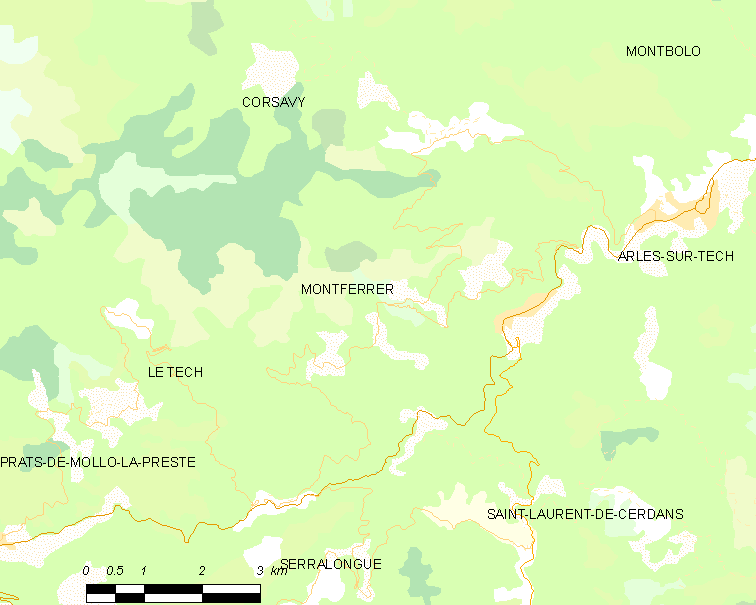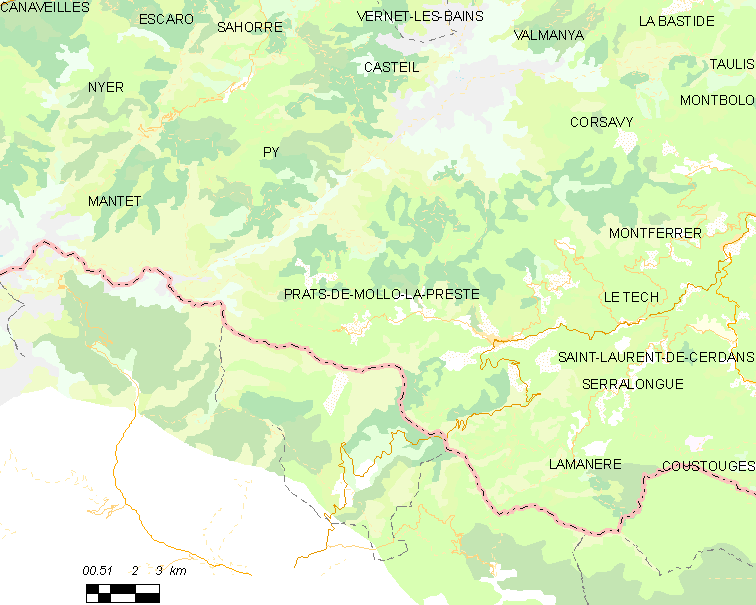|
Telema Tenella
''Telema tenella'' is a species of spider in the family Telemidae. The species is endemic to the eastern Pyrénées between Spain and France. Description ''Telema tenella'' has a length of about 1.5 to 2 mm. Being cave-dwelling, it is eyeless. It is also lungless. This spider can live up to sixteen years old, including twelve years as an adult. Distribution ''Telema tenella'' is found in the caves of the eastern Pyrénées. In France, it can be found in Pyrénées-Orientales around the Canigou, in Montferrer and La Preste. In Spain, it is found in the province of Girona Girona (; es, Gerona ; french: Gérone) is a province of Spain, in the northeastern part of the autonomous community of Catalonia. It is bordered on the northwest by the province of Lleida, on the southwest by the province of Barcelona, on the .... References External links * {{Taxonbar, from=Q1995923 Endemic arthropods of Metropolitan France Endemic fauna of Spain Telemidae Spiders ... [...More Info...] [...Related Items...] OR: [Wikipedia] [Google] [Baidu] |
Eugène Simon
Eugène Louis Simon (; 30 April 1848 – 17 November 1924) was a French naturalist who worked particularly on insects and spiders, but also on birds and plants. He is by far the most prolific spider taxonomist in history, describing over 4,000 species. Work on spiders His most significant work was ''Histoire Naturelle des Araignées'' (1892–1903), an encyclopedic treatment of the spider genera of the world. It was published in two volumes of more than 1000 pages each, and the same number of drawings by Simon. Working at the Muséum National d'Histoire Naturelle in Paris, it took Simon 11 years to complete, while working at the same time on devising a taxonomic scheme that embraced the known taxa. Simon described a total of 4,650 species, and as of 2013 about 3,790 species are still considered valid. The International Society of Arachnology offers a Simon Award recognising lifetime achievement. The Eocene fossil spider species '' Cenotextricella simoni'' was named in his ... [...More Info...] [...Related Items...] OR: [Wikipedia] [Google] [Baidu] |
Spider
Spiders ( order Araneae) are air-breathing arthropods that have eight legs, chelicerae with fangs generally able to inject venom, and spinnerets that extrude silk. They are the largest order of arachnids and rank seventh in total species diversity among all orders of organisms. Spiders are found worldwide on every continent except for Antarctica, and have become established in nearly every land habitat. , 50,356 spider species in 132 families have been recorded by taxonomists. However, there has been debate among scientists about how families should be classified, with over 20 different classifications proposed since 1900. Anatomically, spiders (as with all arachnids) differ from other arthropods in that the usual body segments are fused into two tagmata, the cephalothorax or prosoma, and the opisthosoma, or abdomen, and joined by a small, cylindrical pedicel, however, as there is currently neither paleontological nor embryological evidence that spiders ever had ... [...More Info...] [...Related Items...] OR: [Wikipedia] [Google] [Baidu] |
Telemidae
Telemidae, also known as long-legged cave spiders, is a family of small haplogyne spiders. Most are cave dwelling spiders with six eyes, though some do not have any eyes at all. There are about 104 described species in sixteen genera. Physical features The legs are long, thin, relatively spineless, and do not have trichobothria. They have three pairs of spinnerets, the longest of which is toward the head. Instead of book lungs, they have two pairs of tracheal spiracles. The elongate abdomen bears a hardened ridge above the pedicel running in a zigzag pattern that is more clearly defined in males than females. The pedipalp on males is oval and bag-like with a thin spermatophore. The female pedipalp does not have a claw. Genera , the World Spider Catalog The World Spider Catalog (WSC) is an online searchable database concerned with spider taxonomy. It aims to list all accepted families, genera and species, as well as provide access to the related taxonomic literature. The WSC beg ... [...More Info...] [...Related Items...] OR: [Wikipedia] [Google] [Baidu] |
Pyrénées
The Pyrenees (; es, Pirineos ; french: Pyrénées ; ca, Pirineu ; eu, Pirinioak ; oc, Pirenèus ; an, Pirineus) is a mountain range straddling the border of France and Spain. It extends nearly from its union with the Cantabrian Mountains to Cap de Creus on the Mediterranean Sea, Mediterranean coast. It reaches a maximum altitude of at the peak of Aneto. For the most part, the main crest forms a divide between Spain and France, with the microstate of Andorra sandwiched in between. Historically, the Crown of Aragon and the Kingdom of Navarre extended on both sides of the mountain range. Etymology In Greek mythology, Pyrene (mythology), Pyrene is a princess who eponym, gave her name to the Pyrenees. The Greek historiography, Greek historian Herodotus says Pyrene is the name of a town in Celts, Celtic Europe. According to Silius Italicus, she was the virgin daughter of Bebryx, a king in Narbonensis, Mediterranean Gaul by whom the hero Hercules was given hospitality during his ... [...More Info...] [...Related Items...] OR: [Wikipedia] [Google] [Baidu] |
Spain
, image_flag = Bandera de España.svg , image_coat = Escudo de España (mazonado).svg , national_motto = ''Plus ultra'' (Latin)(English: "Further Beyond") , national_anthem = (English: "Royal March") , image_map = , map_caption = , image_map2 = , capital = Madrid , coordinates = , largest_city = Madrid , languages_type = Official language , languages = Spanish language, Spanish , ethnic_groups = , ethnic_groups_year = , ethnic_groups_ref = , religion = , religion_ref = , religion_year = 2020 , demonym = , government_type = Unitary state, Unitary Parliamentary system, parliamentary constitutional monarchy , leader_title1 = Monarchy of Spain, Monarch , leader_name1 = Felipe VI , leader_title2 = Prime Minister of Spain ... [...More Info...] [...Related Items...] OR: [Wikipedia] [Google] [Baidu] |
France
France (), officially the French Republic ( ), is a country primarily located in Western Europe. It also comprises of Overseas France, overseas regions and territories in the Americas and the Atlantic Ocean, Atlantic, Pacific Ocean, Pacific and Indian Oceans. Its Metropolitan France, metropolitan area extends from the Rhine to the Atlantic Ocean and from the Mediterranean Sea to the English Channel and the North Sea; overseas territories include French Guiana in South America, Saint Pierre and Miquelon in the North Atlantic, the French West Indies, and many islands in Oceania and the Indian Ocean. Due to its several coastal territories, France has the largest exclusive economic zone in the world. France borders Belgium, Luxembourg, Germany, Switzerland, Monaco, Italy, Andorra, and Spain in continental Europe, as well as the Kingdom of the Netherlands, Netherlands, Suriname, and Brazil in the Americas via its overseas territories in French Guiana and Saint Martin (island), ... [...More Info...] [...Related Items...] OR: [Wikipedia] [Google] [Baidu] |
Troglofauna
Troglofauna are small cave-dwelling animals that have adapted to their dark surroundings. Troglofauna and stygofauna are the two types of subterranean fauna (based on life-history). Both are associated with subterranean environments – troglofauna are associated with caves and spaces above the water table and stygofauna with water. Troglofaunal species include spiders, insects, myriapods and others. Some troglofauna live permanently underground and cannot survive outside the cave environment. Troglofauna adaptations and characteristics include a heightened sense of hearing, touch and smell. Loss of under-used senses is apparent in the lack of pigmentation as well as eyesight in most troglofauna. Troglofauna insects may exhibit a lack of wings and longer appendages. Ecological categories Troglofauna are divided into three main categories based on their ecology: * Troglobionts (or troglobites): species, or populations of species, strictly bound to subterranean habitats. * Troglophi ... [...More Info...] [...Related Items...] OR: [Wikipedia] [Google] [Baidu] |
Pyrénées-Orientales
Pyrénées-Orientales (; ca, Pirineus Orientals ; oc, Pirenèus Orientals ; ), also known as Northern Catalonia, is a department of the region of Occitania, Southern France, adjacent to the northern Spanish frontier and the Mediterranean Sea. It also surrounds the tiny Spanish exclave of Llívia, and thus has two distinct borders with Spain. In 2019, it had a population of 479,979.Populations légales 2019: 66 Pyrénées-Orientales INSEE Some parts of the Pyrénées-Orientales (like the ) are part of the . It is na ... [...More Info...] [...Related Items...] OR: [Wikipedia] [Google] [Baidu] |
Canigou
The Canigó ( ca, Canigó, french: Canigou ; la, mons Canigosus or Canigonis) is a mountain located in the Pyrenees of southern France. The Canigó is located less than from the sea and has an elevation of . Due to its sharp flanks and its dramatic location near the coast, until the 18th century the Canigou was believed to be the highest mountain in the Pyrenees. Being between south and Northern Catalonia, the mountain has a historical symbolical significance for Catalan people. Geography The Canigó is located in Pyrénées-Orientales, south of Prades and north of Prats-de-Mollo-la-Preste. Its summit lies on the border between two communes: Vernet-les-Bains and Taurinya (although the territories of two other communes - Casteil and Valmanya - approach quite closely to the summit). Its location makes it visible from the plains of Roussillon and from Conflent in France, and as well from Empordà in Spain. Twice a year, in early February and at the end of October, with good w ... [...More Info...] [...Related Items...] OR: [Wikipedia] [Google] [Baidu] |
Montferrer
Montferrer () is a commune in the Pyrénées-Orientales department in southern France. Geography Montferrer is located in the canton of Le Canigou and in the arrondissement of Céret. Population See also *Communes of the Pyrénées-Orientales department The Pyrénées-Orientales department is composed of 226 communes. Most of the territory (except for the district of Fenolheda) formed part of the Principality of Catalonia until 1659, and Catalan is still spoken (in addition to French) by a ... References Communes of Pyrénées-Orientales {{PyrénéesOrientales-geo-stub ... [...More Info...] [...Related Items...] OR: [Wikipedia] [Google] [Baidu] |
Prats-de-Mollo-la-Preste
Prats-de-Mollo-la-Preste (; ) is a commune in the Pyrénées-Orientales department in southern France, near the border with Spain and the Autonomous Community of Catalonia. The name ''Prats-de-Mollo'' comes from Catalan "meadows of Molló". Molló is a town just across the border and the Col d'Ares. La Preste is a spa resort town that was a separate village but is now included as part of the municipality. Prats-de-Mollo-la-Preste was the capital of the eponymous former canton. It forms part of the historical comarca of Vallespir and is part of Northern Catalonia. Geography Prats-de-Mollo-la-Preste is located in the Pyrenees, from the Spanish border and the Autonomous Community of Catalonia, on the banks of the river Tech, and on the south face of the Canigou at an elevation of 735 meters. Prats-de-Mollo-la-Preste is located in the canton of Le Canigou and in the arrondissement of Céret. History The town, along with other Vallespir municipalities of Roussillon was sep ... [...More Info...] [...Related Items...] OR: [Wikipedia] [Google] [Baidu] |
Province Of Girona
Girona (; es, Gerona ; french: Gérone) is a province of Spain, in the northeastern part of the autonomous community of Catalonia. It is bordered on the northwest by the province of Lleida, on the southwest by the province of Barcelona, on the north by France ( Pyrénées-Orientales), and on the east by the Mediterranean Sea. The population of the province in 2016 was 739,607. Its capital and largest city is Girona, with an urban area (including the neighbouring municipalities of Salt, Sarrià de Ter and Vilablareix) representing, with a total population of 144,709, 19.2% of the population. The Girona area acts as an industrial, commercial and service hub for a significant part of the province. Municipalities of Girona The province has 222 municipalities, including Girona city (population 96,722), Figueres (pop. 44,765), Lloret de Mar (pop. 40,282), Blanes (pop. 39,834), Olot (33,725), Salt (pop. 30,389), Palafrugell (pop. 22,816) and Sant Feliu de Guíxols (pop. 21,814), as ... [...More Info...] [...Related Items...] OR: [Wikipedia] [Google] [Baidu] |




